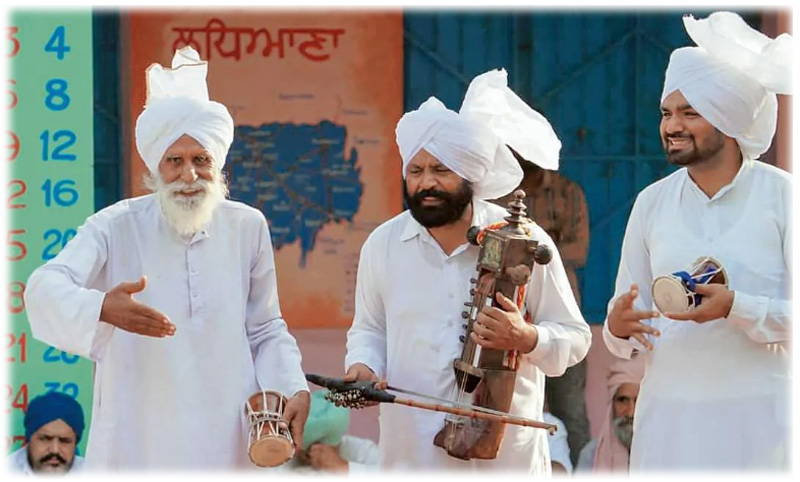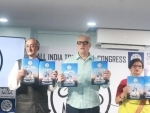 Mirasis
Mirasis In a captivating fusion of Hindu, Muslim, and Sikh influences, the Mirasis, a syncretic community of entertainers and artistes, have been the torchbearers of Punjab’s ancient folk traditions, particularly folk theatre, for centuries.
Among their illustrious figures, one stands out: Bhai Mardana, the minstrel who accompanied Guru Nanak on his spiritual journey.
These multi-talented artists, encompassing sub-genres like Naqqals and Bhands, possess a remarkable array of skills – they sing, play music, act, mimic, dance, tell stories, and induce laughter with their comedy. For every significant event, be it joyous or somber, the Mirasis would perform, captivating their patrons and the general public alike.
Punjabi author Hardial Singh Thuhi, a prolific writer on this subject, explains, “In villages, these folk entertainers were an integral part of daily life.” He adds, “Every village supported a few Bhand and Naqqal families, who not only entertained people every evening but would also distribute invites for joyous or sad occasions, besides doing odd jobs. The villagers would pay them in kind every harvest season. Many royal families also provided patronage to Mirasis.”
However, as India gained independence and embarked on a path of industrialization and agrarian modernization, the Mirasis found themselves marginalized. This marked the beginning of their gradual decline, as Kulbir Kaur Virk, assistant professor of performing arts at Lovely Professional University, points out.
The advent of the Green Revolution sounded the death knell for the Mirasis. Thuhi explains, “Prosperity brought self-dependence. Many artisans like potters, ironsmiths, and carpenters suffered as a result of mechanization. Mirasis were the worst affected.”
Yet, the Mirasis’ exceptional singing talents have not been extinguished. Many renowned qawwals and folk singers, including the Wadali brothers, Ustad Puran Shah Koti, and Koti’s son Master Saleem, all hail from this community. However, the rise of cinema and television has further eroded their audience, leaving their art in a precarious state.
Pritam Rupal, secretary of the Punjab Sangeet Natak Akademi, laments, “It’s an endangered art now.”
Folk musician Desraj Lachkani, famous for his ‘Jugni’ in the film ‘Oye Lucky! Lucky Oye!’, bears witness to this shift. Despite the awards and fame, prosperity has eluded him. His grandson, Armaan, reflects on their struggles, saying, “The audiences are not keen to listen to stories of old times.”
Armaan, a graduate who tried other jobs, had to return to his family’s legacy. “There has been no work for four months,” he says, describing his current employment as a daily-wager at a fruit shop.
With their survival hanging in the balance and a lack of support from music companies or producers, the Mirasis struggle to create and promote new tracks.
In contrast, Khushi Mohammad’s Naqqal group from Ghanaur has fared relatively better, performing at numerous events and even receiving invitations from cultural centers. Yet, they too have to rely on other jobs to make ends meet.
The sad truth remains that there is minimal institutional or government effort, political will, or documentation to preserve this dying art form and support the Mirasi community. While some efforts, such as the youth festival circuit and university competitions, have provided a lifeline to a few, a concerted effort by the government and cultural bodies is needed to restore pride in this rich legacy, as emphasized by theater director Neelam Mansingh Chowdhry.
Rajinder Singh and Amita Sharma, both alumni of the National School of Drama, have been working diligently since 2013 to document and preserve Punjab’s folk theatre form through their association with the Bhand-Mirasi community. Their efforts reflect the importance of recognizing and sustaining these invaluable cultural traditions.
(Photo and text credit: Khalsavox.com)
Support Our Journalism
We cannot do without you.. your contribution supports unbiased journalism
IBNS is not driven by any ism- not wokeism, not racism, not skewed secularism, not hyper right-wing or left liberal ideals, nor by any hardline religious beliefs or hyper nationalism. We want to serve you good old objective news, as they are. We do not judge or preach. We let people decide for themselves. We only try to present factual and well-sourced news.







